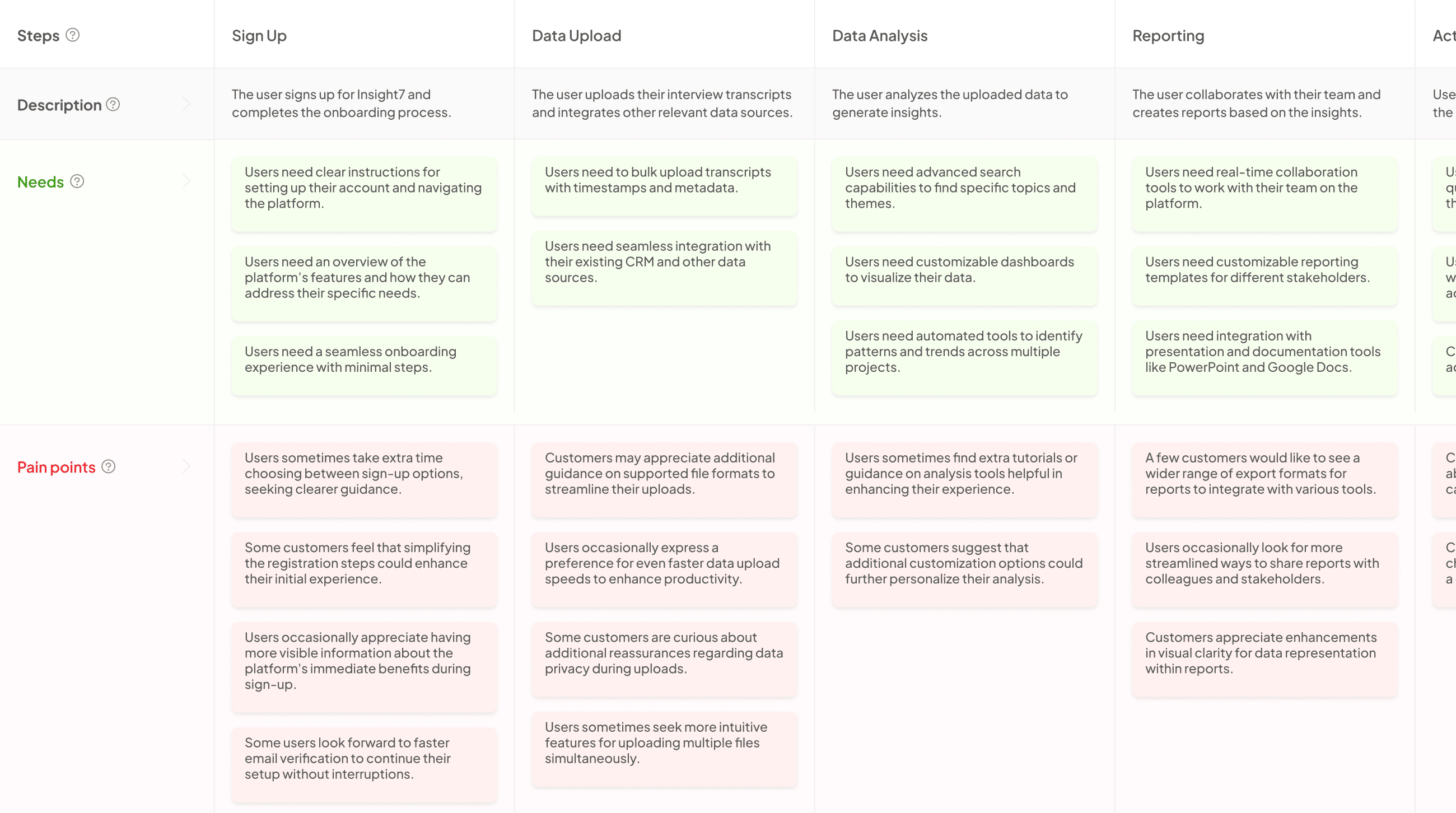Why A Product Journey Map Is Important To The User’s Experience
-
Bella Williams
- 10 min read

As is common knowledge, your customer should always come first. It takes effort to retain your customers both before and after they buy your product or service.
This is where a journey map comes in. A journey map is a visualization of the process that a person goes through in order to accomplish a goal. Journey mapping is important because it helps to identify customer pain points, gives you a feel of the customer’s state while using your product, and lets you uncover unique perspectives and potential solutions to improving it.
What is a Product Journey Map?
A product journey map is a tool for visualizing how a user interacts with your product. It is a visual representation of every behavior and possible step or action the user takes while using your product.
It includes everything a user does; from sign-up to activation, as well as how they interact with and navigate your entire product and use specific features.
It also improves the overall product experience and increases the likelihood of users progressing to the activation and retention stages.
Extract insights from Customer & Employee Interviews. At Scale.

Product Journey Map Vs Customer Journey Map
A product map (also known as a user journey map) encompasses all interactions a user has with your product and is used in UX and product development, whereas a customer journey map encompasses all interactions a user has with your brand and product across multiple channels and platforms, even before the purchase, and is primarily used in marketing and sales.
While product journey maps are most commonly used by product managers to understand how customers interact with their products, customer journey maps are most frequently used by marketing and sales teams to understand how customers interact with their businesses.
Product journey maps and customer journey maps are both useful tools for understanding the customer experience. They do, however, have distinct advantages and disadvantages. Customer journey maps are better for understanding the company’s interactions with customers, whereas product journey maps are better for understanding the product itself.
How to Create a Product Journey Map
1. Define your goal
Before you start creating your product journey map, you should know what you want to achieve with it. Do you want to make the customer experience better? increase your sales? Identify potential improvements to your product? Once you’ve determined your objectives, you can tailor the map to meet them.
Your objectives should be specific, measurable, attainable, timely, and relevant (SMART). That is, they must be clear and concise, with a specific deadline.
2. Create your user persona
After you’ve determined your goals and the type of user journey map you’ll be creating, the next step is to define the map’s target user personas.
You can improve your chances of getting better results by selecting the necessary user personas for your journey maps. If you want to improve a specific feature, your target persona should be the people who use it.
3. Gather data
Once you’ve identified your user persona, you can start collecting data on how they interact with your product or service. This information can come from a variety of sources, including customer surveys, user interviews, focus groups, and analytics data.
There are several methods for gathering data for your product journey map. Surveys, interviews, focus groups, and even existing customer data can be used.
Generate Journey maps, Mind maps, Bar charts and more from your data in Minutes
4. Assign key milestones
Milestones are important points in your product’s user journey. They typically represent the completion of a goal that the user has achieved and are useful for tracking user progression.
They will not be able to benefit from your product unless they follow these steps. They’ve reached one milestone in their journey by completing the steps and meeting their goal of a scheduled meeting.
Assigning milestones in your product journey map will provide you with insight into how the customer interacts with your product and whether or not they are progressing in their journey.
5. Create the map
To create a product journey map, there are a number of tools you can use. e.g Miro, Lucid Chart, Conceptboard, Smaply.
The important thing is to include all the relevant information you gathered in Step 3.
Benefits of Product Journey Maps
1. Improves user understanding
One of the primary advantages of product journey mapping is that it allows product managers to gain a thorough understanding of their customers. They can see what steps customers take to complete a task, what challenges they face, and what motivates them throughout the process by mapping out the customer journey. This information is invaluable to product managers because it allows them to better tailor their products and services to their customers’ needs.
2. Aligns cross-functional stakeholders
Mapping the customer journey works best when UX, marketing, product, sales, customer service and success, shipping, management, and other teams contribute their perspectives. This can include physically putting different roles in the same room or gathering feedback from them to understand how they interact with your customer. These diverse insights help to accelerate the process of resolving customer journey issues, allowing users to see improvements sooner.
3. Gives your product a competitive edge
Mapping reveals just how you may enhance the consumer experience to distinguish your offering from the competition.
When having a great product is no longer sufficient on its own, these product experience and user insights can provide your brand a competitive edge. They also help your brand stay relevant, modify your product and business model as customer needs evolve.
Importantly, mapping aids in locating influencers and early adopters as well as your “halo” customers—the group that, when you land them, causes everyone else to sit up and take notice. The first step in figuring out how to draw in more of them is to do that.
4. Improves marketing and product-led growth
Mapping the journey from beginning to end allows you to get to know your users, participate in their conversations, and create content for all stages of the buyer journey to help convert visitors into paying customers. This process is especially useful for companies with long, complex buyer journeys and high-value products, such as SaaS or B2B customer journeys.
Creating a product journey map also eliminates guesswork and allows you to validate ideas, from identifying the right channels, messaging, positioning, and content to establishing credibility and trust with customers.
5. Helps create personalized experiences
Personalization is essential for delivering a great customer experience, even with self-service products, because customers value brands that understand their specific requirements.
Mapping allows you to gain a deeper understanding of user intent and interactions, allowing you to create personalized experiences across all touchpoints.
Get Started for free today or Book a demo
Extract insights from Customer & Employee Interviews. At Scale.








